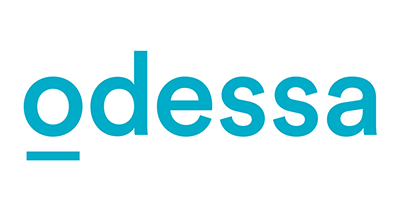
The Department for Business and Trade has released its latest Small Business Survey for the period of November 2022- April 2023, surveying over 7,000 SMEs in the UK, reviewing their overall performance and external factors impacting it.
In 2022, a higher proportion of SME employers reported an increase than a decrease in the number employed (26% compared with 19%). The increase is lower than 2021 (down eight percentage points) and in line with pre-coronavirus (COVID-19) trends.
SME employers’ expectations of employment growth echo recent employment growth with 26% expecting to increase their number of staff in the next year while 11% expected to employ fewer people in a year’s time.
Reported sales (turnover) over the preceding 12 months suggests sustained recovery following the economic shock of the coronavirus pandemic, with 46% of SME employers established for at least a year reporting an increase in annual level of sales (turnover) in the last 12 months. While SME employers continued to be positive about growth in the next 12 months, fewer than in 2021 expected to report an increase in sales in 12 months’ time (36% compared with 46% in 2021).
This was reflected in businesses’ aims for growth in the next three years, with 74% of SME employers aiming to increase sales over the following three years, compared with 76% in 2021. More than half of SME employers (55%) with plans to undertake growth-related activities reported plans had been affected by issues relating to rising costs.
In 2022 the main reported obstacle to growth for SME employers was the level of energy prices (60%). Competition and taxation were the next most frequently mentioned obstacles (both 41%), followed by staff recruitment and skills (40%). Other major obstacles included regulations and red tape (39%), the UK’s exit from the EU (32%), other issues (not related to energy prices) related to costs (32%) and late payment (29%), while the coronavirus (COVID-19) pandemic remained a relatively significant concern in 2022 (33%).
However, despite rising costs, 79% of SME employers generated a profit or surplus in their last financial year, highlighting the steep upward trend since 2020, with a six percentage points increase on 2021 and a twelve percentage points increase on 2020.
Three-quarters of SME employers (75%) were using some form of external finance at the time of the survey. This compared with 74% in 2021, 72% in 2020, and 63% in 2019. Government or local grants or schemes or loans from financial institutions directly related to coronavirus measures were still a factor for around a fifth of SME employers.
Use of ‘alternative’ finance, which includes equity finance, factoring and peer-to-peer platform loans has remained at a similar level over the last three years (9% in 2020, 7% in 2021 and 8% in 2022), but was more common in small and medium-sized businesses (14% and 22% respectively) and more widely used than average by SME employers in manufacturing and administration sectors (both 13%).
SME employers were more likely to have sought external finance in 2022 than in 2021 (11% compared with 8%), thus reversing the decline between 2020 and 2021.
On today’s Small Business Survey results, Mike Randall (pictured), CEO at Simply Asset Finance commented: “As the first survey undertaken since pandemic trading restrictions and social distancing measures were lifted, The Department for Business and Trade's latest small business survey gives us reasons to be optimistic for the SME sector.
"Confidence and resilience are prominent themes running throughout the data, which shows a third of SMEs (36%) reporting an increase in staff numbers, four-in-five reporting profits (79%), and ongoing growth expectations for the next 12 months (36%).
"While rising energy prices were understandably a universal challenge at the time of the survey, more recent drops in wholesale energy costs could hopefully see this pressure eased in the second half of the year. However, the challenges still to overcome for many include rising costs (32%), staff recruitment and skills (40%), and late payments (29%).
" SMEs are continuing to show their resilience and are working with financial partners to overcome them. Three-quarters (75%) of SMEs are currently using some form of external finance, underlining the importance for business leaders to have access to quality, tailored financial solutions to support them through the highs and lows of running a firm. It's a vital responsibility for us as lenders to recognise this, and work closely with businesses to help them along their journey to growth."
Neil Rudge, Head of Enterprise at Shawbrook commented: “Confidence is continuing to bloom amongst small businesses as increasing numbers in this community report positive outcomes and sentiment. This trend has been slow but steady, with optimism growing over the last four years despite the economic challenges across the period. Indeed, significant numbers of SMEs reported generating a higher level of profit in the last year than they originally predicted, a reassuring sign for the market as more businesses look towards growth in the coming years.
“To support their ambitions, SMEs are increasingly turning to external finance to fund their business requirements. Again, this correlates with the growth we’re seeing in the small business sector, with more SMEs looking for greater financial support as they expand and invest. External financial options can offer greater flexibility and provide additional cashflow which can be critical for those looking to progress to the next stage.
"As confidence strengthens in the sector, small business owners should ensure they’re equipped to take that next step and investigate the funding options available to them. There are numerous routes from which to choose depending on requirement and purpose, from asset finance to acquire or upgrade business equipment to corporate lending facilities that support pivotal transitions such as acquisitions and business exits. Working with a funder who has a broad range of flexible products and takes the time to understand the client's objectives can make all the difference and speaking to a broker or financial adviser can help SMEs identify what will work best for their business’ individual needs and goals.”
To read the Department for Business and Trade’s 2022 Small Business Survey, click here.

